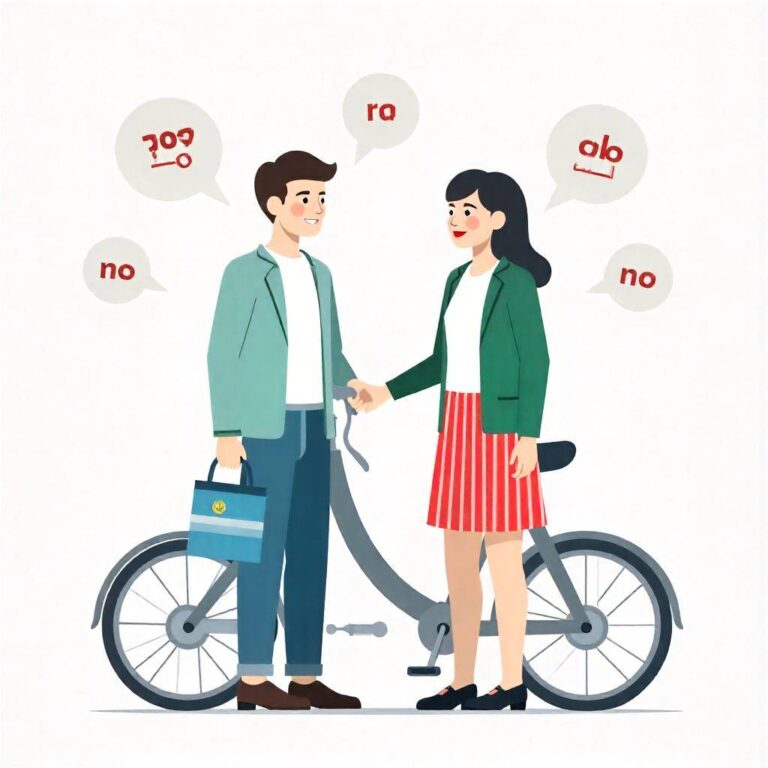Question from a reader:
Yesterday, while driving my car, I had a collision with a bicycle that was coming from the left front. The road had no opposing lane. When a car came from the opposite direction and passed by, the bicycle that was ahead suddenly tried to turn right and hit my car’s passenger door. I immediately pulled over to
the shoulder to check, and the woman on the bicycle was not injured but seemed dazed. She didn’t answer why she suddenly turned. She was wearing large headphones and appeared to be oblivious to her surroundings. According to the police, she seems to be uninsured. My car has scratches from the passenger door to the area around the fuel cap, and the bicycle also had marks on the corner of the right basket. It was processed as a property damage accident, but if the other party’s bicycle is uninsured, will the repair costs be borne according to the other party’s degree of fault? In a situation where someone suddenly turns right while wearing headphones and without checking for safety, is it likely that the car will be deemed at fault? Since my car is not new, I am considering covering up the damage with paint instead of using insurance, especially considering the potential increase in insurance premiums afterward. However, I am also worried that if I don’t repair it, the other party’s share of fault might disappear. I believe the best course of action will depend on the degree of fault in the future, but is there anyone who can advise me on what to do? I welcome opinions from those who have had similar experiences or are knowledgeable about traffic laws.
Legal Considerations and Responses to Bicycle Collision Accidents
Recently, there has been an increase in bicycle and car collision accidents in urban areas. Particularly in situations where traffic rules and safe driving are not strictly followed, unexpected accidents can occur. In this blog, we will examine the legal perspectives and future responses based on questions from someone who has experienced a collision with a bicycle.
Reflecting on the Accident Situation
Looking back at the questioner’s case, the first important aspect is the circumstances of the accident. The fact that the bicycle suddenly turned right suggests that there was some issue with her driving behavior. In particular, since she was wearing headphones, it is highly likely that she was not aware of her surroundings and lacked attention. Driving behavior in such circumstances can be deemed problematic according to traffic regulations. In this case, which was processed as a property damage accident, the degree of fault becomes a crucial point. Generally, the degree of fault is determined by the circumstances of the accident, the types of vehicles involved, and the actions of the drivers. Even if the bicycle was uninsured, the burden of repair costs could change depending on the degree of fault.
Understanding the Degree of Fault
In determining the degree of fault, it is necessary to analyze the accident’s circumstances in detail. In this case, the fact that the bicycle rider neglected her duty of care is a significant point. By suddenly turning right without grasping the surrounding situation, she caused an accident beyond the range of what could be reasonably anticipated. Therefore, her degree of fault is likely to be quite high. Typically, in collisions between cars and bicycles, the bicycle side tends to bear more fault. Particularly when a bicycle acts without confirming the surrounding traffic situation, that fault is evaluated highly. Of course, the car also has a duty of care, so there may be cases where a certain degree of fault is recognized on that side as well, but in this instance, the bicycle’s behavior was clearly dangerous, so it is considered that the fault largely lies with the bicycle.
Handling Accidents with Uninsured Bicycles
One of the concerns of the questioner is that the other party is uninsured. In the case of being uninsured, it may be difficult to claim compensation from the other party, leading to the possibility of having to bear the full repair costs. However, as the degree of fault increases, the proportion that the other party should bear may also increase, potentially reducing the self-burden. Furthermore, when it comes to handling the accident, coordination with the insurance company is crucial. The insurance company can assist with analyzing the degree of fault after the accident and handling necessary procedures. If considering using insurance, it is advisable to consult with the insurance company first, as there is a possibility that repair costs could be covered by insurance.
Risks of Self-Burden and Repair Choices
Now, regarding the options for self-burden, the idea of covering up with paint might seem appealing at first glance. However, not repairing it could lead to future troubles. For example, if there is a record of the accident, the degree of fault could be reassessed later, potentially increasing the amount you have to bear. Additionally, covering up with paint could worsen the damage, and if appearance is a concern, it might be an issue. If left unrepaired, the impact of the accident could lead to a higher evaluation of your degree of fault in the future, so it is essential to be prepared for certain risks.
Prioritized Actions
Based on these considerations, the prioritized actions are as follows: 1. Organize the accident situation: It is important to detail the circumstances of the accident and, if possible, gather testimonies from witnesses or the police. This will serve as material for determining the degree of fault. 2. Consult with the insurance company: It is crucial to communicate thoroughly with the insurance company regarding post-accident handling and the degree of fault. Considering the use of insurance may help reduce self-burden. 3. Consider repairs: I encourage you to seriously think about repairs to avoid appearance issues and future troubles. Especially if the vehicle has significant value, repairing it will help protect your asset. 4. Maintain calm judgment: After an accident, feelings of anxiety and urgency are common, but it is essential to analyze the situation calmly and make the best choice.
Conclusion: Careful Driving Protects the Future
Bicycle collision accidents are very delicate issues that require considerable legal consideration. Given the various factors involved, such as the circumstances of the accident, the degree of fault, and cases of uninsured parties, it is important to think carefully about each aspect. Accidents can happen to anyone, but being mindful of careful driving for the future is paramount. In your future driving, I hope you keep safety as your top priority. I sincerely wish everyone safe driving.



